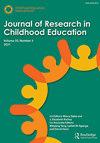Exploring the Use of Teacher Third-Position Support of Multilingual and Monolingual Children: A Multiple Case Study in Kindergarten Classrooms
IF 1.3
Q2 EDUCATION & EDUCATIONAL RESEARCH
引用次数: 0
Abstract
ABSTRACT With a growing number of multilingual children entering early childhood education, teachers are challenged to create appropriate learning opportunities for all children. Given diverse literacy skills and cultural backgrounds, early childhood educators might provide different support to children after an inappropriate child response depending on the child’s language background. Therefore, the present study aimed to identify different types of teacher third-position support (i.e., support provided after not being satisfied with the child response or nonresponse) in interaction with multilingual and monolingual kindergartners. We conducted a multiple case study in which three kindergarten teachers and seven multilingual and five monolingual children were observed in the classroom during one school year. Support sequences were analyzed using content analysis. We identified six different types of teacher third-position support in educational interactions with multilingual children: allocate turn to another child, provision of hints, reduction of choice, establishing common ground, modeling, and using the home language. Teachers tended to use reduction of choice more with multilingual children, whereas provision of hints was used more with monolingual children. Overall, the presented study enabled us to obtain an in-depth view of how teachers differentially adopt types of third-position support in interaction with multilingual and monolingual kindergartners.多语和单语儿童教师第三位支持的运用探析——以幼儿园课堂为例
随着越来越多的多语种儿童进入幼儿教育,教师面临着为所有儿童创造适当的学习机会的挑战。鉴于不同的读写能力和文化背景,幼儿教育工作者可能会根据儿童的语言背景,在儿童做出不适当的反应后,提供不同的支持。因此,本研究旨在识别教师在与多语和单语幼儿园幼儿互动中不同类型的第三位置支持(即在对幼儿反应不满意或无反应后提供的支持)。我们进行了一个多案例研究,在一个学年里,我们在教室里观察了三位幼儿园教师和七名多语儿童和五名单语儿童。采用内容分析法对支持序列进行分析。在与多语言儿童的教育互动中,我们确定了六种不同类型的教师第三位支持:分配给另一个孩子,提供提示,减少选择,建立共同点,建模和使用母语。教师倾向于在多语儿童中更多地使用减少选择,而在单语儿童中更多地使用提示。总的来说,本研究使我们能够深入了解教师在与多语和单语幼儿园儿童互动时如何采用不同类型的第三位置支持。
本文章由计算机程序翻译,如有差异,请以英文原文为准。
求助全文
约1分钟内获得全文
求助全文
来源期刊

Journal of Research in Childhood Education
EDUCATION & EDUCATIONAL RESEARCH-
CiteScore
3.10
自引率
0.00%
发文量
27
期刊介绍:
The Journal of Research in Childhood Education, a publication of the Association for Childhood Education International, features articles that advance knowledge and theory of the education of children, infancy through early adolescence. Consideration is given to reports of empirical research, theoretical articles, ethnographic and case studies, participant observation studies, and studies deriving data collected from naturalistic settings. Cross-cultural studies and those addressing international concerns are welcome.
 求助内容:
求助内容: 应助结果提醒方式:
应助结果提醒方式:


